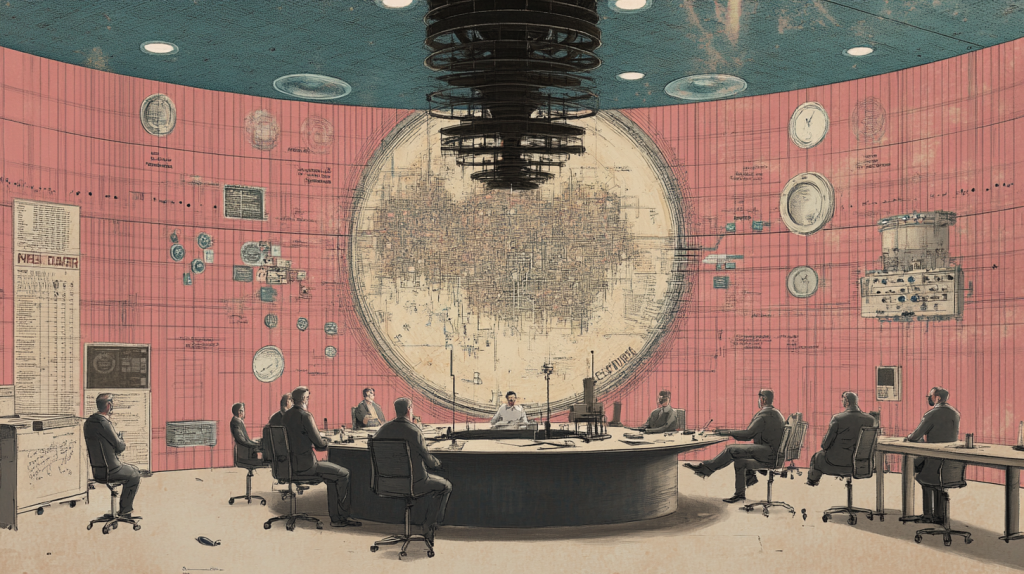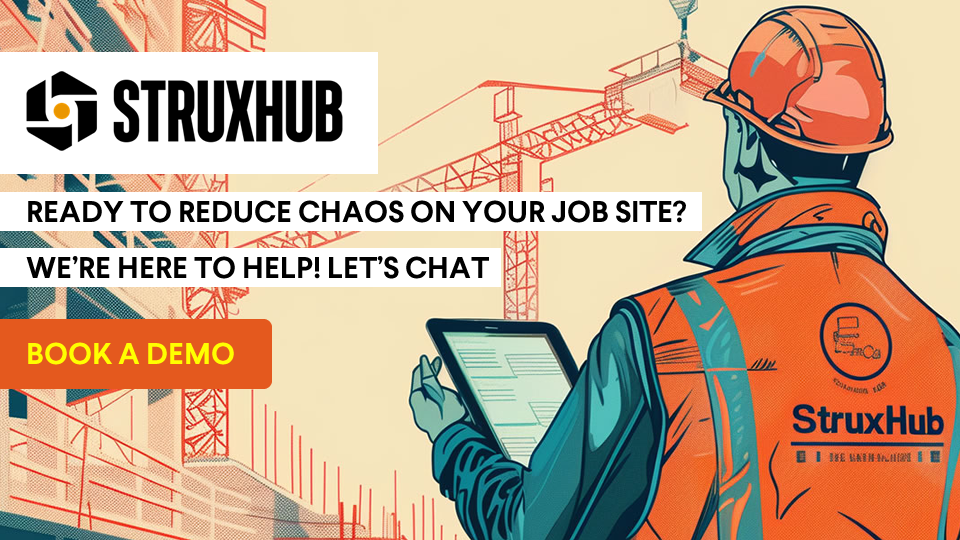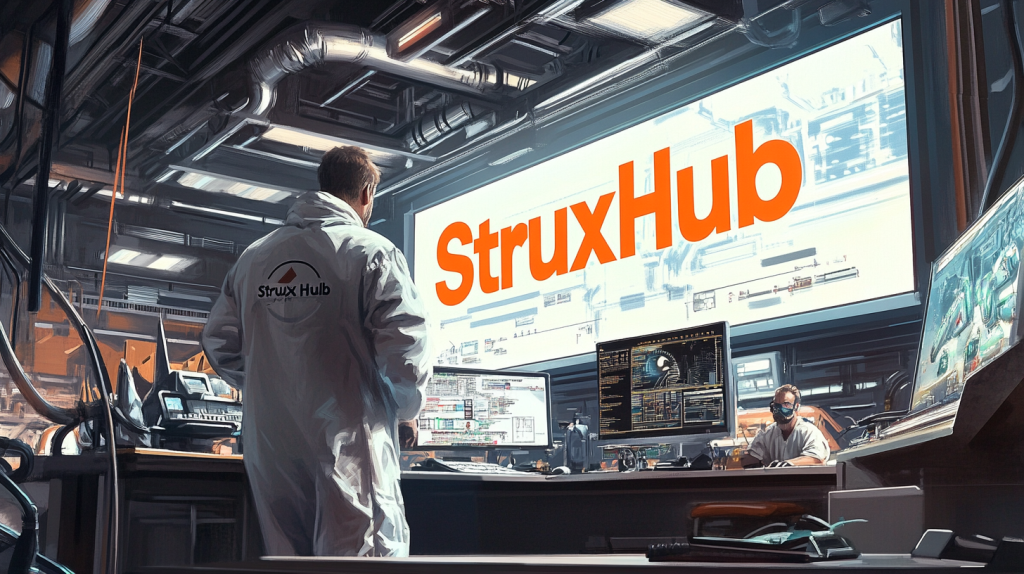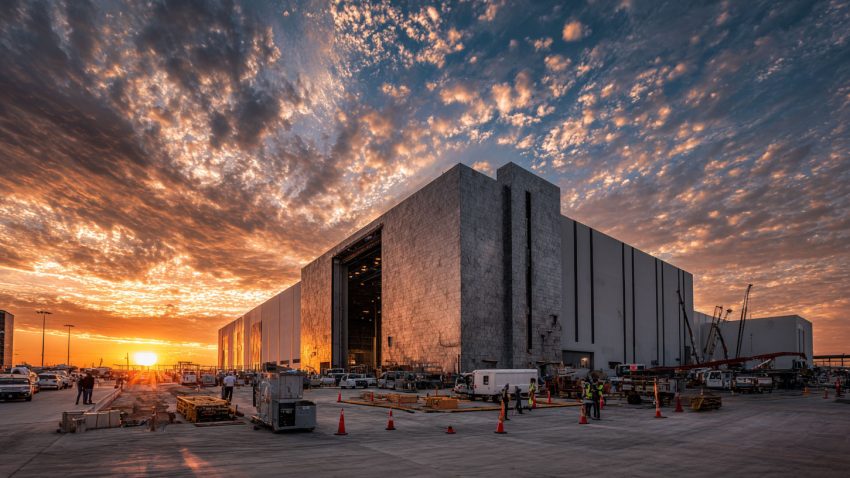Data Center Construction Management Software: How Advanced Construction Management Supports Edge and Hyperscale Data Center Development
Table of Contents:

As data demands surge worldwide, hyperscale and edge data centers are evolving to support the growing need for faster, more reliable digital infrastructure. Unlike traditional data centers, these facilities require high-speed deployment, advanced automation, and precise construction coordination to meet industry standards and operational expectations. Managing these large-scale projects efficiently demands cutting-edge construction management software to streamline workflows, enhance collaboration, and optimize project execution.
Construction management platforms help track scheduling, monitor logistics, manage compliance, and coordinate diverse teams across multiple locations. From hyperscale campuses requiring massive infrastructure installations to edge facilities needing rapid, modular deployments, these tools reduce inefficiencies, improve visibility, and ensure seamless execution from planning to commissioning.
This article explores how advanced construction management software supports the development of hyperscale and edge data centers, covering key benefits, industry challenges, and best practices for implementation.
The Growing Demand for Hyperscale and Edge Data Centers
As cloud computing, AI, and IoT adoption accelerate, the need for scalable and high-performance data centers is at an all-time high. Hyperscale data centers serve large-scale cloud providers, enterprises, and content delivery networks, offering massive computing power and storage capacity. Meanwhile, edge data centers support low-latency applications by processing data closer to end users, reducing network congestion and improving real-time performance.
These facilities must be built quickly and efficiently, making construction management software essential for ensuring that materials, labor, and infrastructure components are aligned with project schedules. Whether managing a 100MW hyperscale facility or a modular edge deployment, digital tools help teams stay on track, within budget, and in compliance with industry standards.
Related Articles:
Best Guide to Data Center Construction Management Software: Manage Scheduling, Deliveries, and Compliance for Hyperscale Projects
Data Center Construction Deliveries: Best Real-Time Tracking Solutions for Managing Data Center Construction Deliveries
Data Center Construction: Top Delivery and Scheduling Strategies for Redundant Power Systems in Data Centers

How Construction Management Software Optimizes Project Timelines
One of the biggest challenges in data center construction is meeting aggressive project deadlines while managing multiple vendors, contractors, and supply chain partners. Construction management software enables real-time scheduling, task automation, and milestone tracking, allowing teams to identify bottlenecks early and adjust workflows dynamically.
Key Benefits of Construction Scheduling Software:
- Automated task sequencing to ensure smooth coordination between site preparation, equipment installation, and commissioning.
- AI-powered risk analysis to predict potential delays and recommend contingency plans.
- Cloud-based collaboration tools for real-time updates across distributed teams and stakeholders.
For hyperscale builds, scheduling tools allow for simultaneous execution of multiple workstreams, reducing downtime between phases. In edge data centers, software supports modular and prefabricated construction methods, expediting deployment timelines without compromising quality.
Managing Logistics and Supply Chain Coordination for Data Centers
Logistics play a critical role in data center construction, as these projects require specialized equipment, long-lead-time components, and just-in-time delivery precision. Construction management platforms integrate real-time inventory tracking, automated procurement workflows, and vendor coordination to ensure seamless supply chain execution.
How Construction Software Improves Logistics:
- Shipment tracking and real-time alerts for mission-critical equipment such as generators, cooling units, and power distribution panels.
- Warehouse and staging area management to optimize material storage and prevent construction delays.
- AI-driven supply chain forecasting to prevent shortages and reduce project costs.
For hyperscale projects, construction teams must coordinate deliveries across multiple phases, ensuring materials arrive exactly when needed. In edge deployments, logistics tools help optimize regional distribution centers and last-mile delivery, accelerating infrastructure rollout.

Enhancing Compliance and Risk Management in Data Center Construction
Compliance is a non-negotiable aspect of data center construction, with facilities needing to meet Uptime Institute Tier Standards, ANSI/TIA-942 certifications, and environmental impact regulations. Manual compliance tracking increases the risk of missed deadlines, legal complications, and costly fines.
Construction management software simplifies compliance by automating documentation, tracking permit approvals, and ensuring regulatory requirements are met. These tools also provide audit-ready records and real-time compliance dashboards, giving project managers instant visibility into potential risks.
For hyperscale projects, compliance software helps teams navigate multi-region regulatory requirements, ensuring that facilities meet international and local standards. In edge deployments, automated compliance workflows simplify fast-tracked permitting and certification processes, allowing teams to deploy rapidly in various locations.
Optimizing Workforce Coordination Across Distributed Data Center Sites
Managing labor resources efficiently is critical for meeting project timelines and reducing costs. Hyperscale projects require thousands of workers, while edge data center builds involve smaller, more agile teams working in remote locations. Without proper workforce coordination, teams risk overlapping schedules, labor shortages, and compliance violations.
How Workforce Management Tools Improve Data Center Construction:
- Automated crew scheduling and role assignments based on skill sets and project needs.
- Digital safety tracking and compliance reporting to ensure adherence to OSHA and industry standards.
- Mobile-friendly workforce platforms to facilitate communication between on-site crews and remote managers.
By leveraging construction management software, data center projects can optimize labor utilization, reduce downtime, and improve on-site productivity.

Integrating Prefabrication and Modular Construction for Faster Deployment
As data center demand continues to grow, prefabrication and modular construction are becoming essential for accelerating project timelines. Many hyperscale providers and edge developers are embracing pre-built infrastructure components, including modular power rooms, prefabricated cooling systems, and containerized data centers.
Construction management software supports these methods by coordinating off-site fabrication with on-site assembly, ensuring that prebuilt components arrive exactly when needed for installation. This integration reduces material waste, minimizes labor costs, and allows for faster deployment.
For hyperscale projects, prefabrication speeds up power and cooling infrastructure rollouts, while for edge data centers, it enables plug-and-play deployment in diverse environments. By integrating prefabrication workflows with construction management software, teams enhance scalability and reduce project complexity.
Related Articles:
Sustainable Data Center Construction: Best Green Building Practices for Sustainable and Mission-Critical Data Center Construction
Data Center Construction Compliance: Top Tools for Streamlining Permits and Compliance in Data Center Construction
Data Center Construction Delivery Coordination: Efficient Scheduling Strategies for Modular Data Center Equipment Installations

StruxHub
Experience the power of StruxHub today and witness firsthand how it can revolutionize your construction operations.
The Future of Construction Management Software in Data Center Development
As data center construction continues to evolve, the role of construction management software will expand, integrating AI, predictive analytics, and digital twin technology to enhance efficiency and reduce risks. These tools will provide even greater automation in scheduling, compliance tracking, and workforce optimization, allowing for faster, more cost-effective deployments.
Key Trends in Data Center Construction Management Software:
- AI-powered scheduling adjustments to optimize project timelines.
- Machine learning-driven risk mitigation to prevent supply chain disruptions.
- Blockchain-based contract management for improved transparency and accountability.
As edge and hyperscale data centers become more complex, the need for advanced construction management solutions will continue to grow, ensuring that projects remain efficient, scalable, and compliant with industry standards.
Leveraging StruxHub for Real-Time Data Center Construction Management
Managing a hyperscale or edge data center requires advanced coordination between multiple teams, vendors, and logistics partners. Without an integrated platform, project managers face challenges like delays in equipment delivery, workforce misalignment, and compliance oversights. Modern construction management software streamlines these complexities, allowing for real-time tracking, automated workflows, and predictive analytics to improve efficiency.
One such platform, StruxHub, provides end-to-end visibility into scheduling, material tracking, and workforce management. By integrating StruxHub into the data center construction process, teams can:
- Monitor project progress in real time, ensuring that each phase aligns with planned timelines.
- Track material deliveries and installations, preventing shortages and delays in critical infrastructure deployment.
- Automate compliance tracking, ensuring permits and certifications are handled proactively rather than reactively.
StruxHub helps construction teams minimize risks, improve communication between stakeholders, and ensure seamless project execution. By centralizing project data, teams can make informed decisions faster, keeping projects on schedule and within budget.

How StruxHub Enhances Vendor and Logistics Coordination for Data Center Builds
Vendor and logistics coordination is one of the most challenging aspects of data center construction, especially when dealing with long lead-time equipment and multi-vendor dependencies. Late or mismanaged deliveries can throw off entire installation timelines, leading to additional costs and inefficiencies.
StruxHub’s logistics management tools offer:
- Live tracking for shipments, providing real-time updates on material arrivals.
- Automated delivery scheduling, aligning shipments with construction phases to minimize storage issues.
- Supply chain risk mitigation, helping teams plan alternative procurement strategies if delays arise.
With these capabilities, StruxHub enables construction managers to improve material flow, optimize warehouse operations, and reduce risks related to shipment delays. By leveraging an integrated logistics and vendor coordination platform, teams can enhance overall efficiency while maintaining tight construction schedules.
Optimizing Compliance and Workforce Coordination with StruxHub
Ensuring regulatory compliance and efficient workforce deployment is critical in data center construction. Complex permitting requirements, remote workforce management, and strict safety protocols add layers of complexity that can slow down progress if not properly managed.
StruxHub offers a centralized compliance and workforce management solution, allowing teams to:
- Automate compliance tracking, ensuring that all permits and certifications are up to date.
- Digitize workforce scheduling and task assignments, improving visibility and efficiency.
- Monitor safety compliance in real-time, reducing the risk of regulatory violations and job site incidents.
By integrating compliance and workforce coordination into a single platform, construction teams can reduce administrative burdens and keep projects moving forward with confidence.
Unlock the Full Potential of Your Construction Projects with StruxHub
StruxHub enhances efficiency and coordination across all project phases, providing a single source of truth that eliminates silos and fosters collaboration. Real-time updates, financial management tools, and seamless commvunication features ensure that all team members and stakeholders are aligned and informed, reducing the risk of errors and delays. With comprehensive solutions for document management, risk mitigation, and quality control, StruxHub maintains project integrity and safety, while mobile access and integration capabilities further enhance project flexibility and efficiency.
StruxHub’s Key Features and Benefits:
- Advanced Delivery Management: Automate and optimize your delivery schedules, ensuring materials arrive just in time, every time.
- Site Communication: Utilize georeferenced maps and instant messaging to keep every team member informed and aligned.
- Construction Materials Management: Track inventory levels and manage materials procurement with ease, reducing waste and avoiding project delays.
- Construction Safety & Inspection Workflows: Implement customizable mobile forms for conducting safety inspections and managing compliance documentation effortlessly.
- Short-Term Scheduling: Visualize project tasks with detailed floor plans, linking each activity to specific locations for better planning accuracy.
- Construction Resource Management: Efficiently allocate personnel and equipment, maximizing productivity and reducing idle time.
StruxHub’s Product Offering:
- StruxHub Deliveries: Simplifies the coordination of incoming deliveries, ensuring materials and equipment are precisely timed to project needs.
- StruxHub Logistics: Offers intelligent site logistics planning, from crane scheduling to space allocation, for smoother operations.
- StruxHub Safety: Elevates on-site safety standards with easy-to-use tools for inspections, permits, and incident reporting.
- StruxHub Scheduling: Enhances project timelines with intuitive scheduling tools that ensure tasks are completed efficiently and on time.
With StruxHub, construction companies can look forward to a streamlined, more efficient project execution that delivers on time and within budget. Embrace the power of innovation and take your construction projects to the next level.
Don’t miss out on the opportunity to optimize your construction management processes with StruxHub. Sign up for a free demo today. Let’s build smarter, together.
Related Articles:
Data Center Construction Document Control Solutions: How to Manage Contracts and Regulatory Documents in Data Center Construction
Best Guide to Data Center Construction Management Software: Manage Scheduling, Deliveries, and Compliance for Hyperscale Projects
Data Center Construction Deliveries: Best Real-Time Tracking Solutions for Managing Data Center Construction Deliveries
Data Center Construction: Top Delivery and Scheduling Strategies for Redundant Power Systems in Data Centers

FAQ
1. How does construction management software improve scheduling for hyperscale data centers?
Construction management software plays a crucial role in hyperscale data center development by providing real-time scheduling tools, predictive analytics, and automated workflows. These projects involve thousands of moving parts, including civil engineering, mechanical systems, power distribution, and IT infrastructure, all of which must be executed in a carefully coordinated manner.
Without a centralized scheduling system, teams risk delays, cost overruns, and workforce misalignment. Construction management platforms allow automated task prioritization, ensuring that each phase of the build progresses in the right sequence. By integrating weather forecasts, material delivery schedules, and workforce availability data, scheduling software enables teams to predict and resolve bottlenecks before they occur.
Additionally, for hyperscale builds that require simultaneous multi-site management, cloud-based scheduling platforms ensure visibility across different locations, helping teams track progress and adjust resources dynamically. This level of automation reduces manual scheduling errors and keeps large-scale data center projects on time and within budget.
2. What role does logistics management play in data center construction?
Efficient logistics management is essential for the timely and cost-effective construction of hyperscale and edge data centers. With highly specialized equipment such as HVAC systems, electrical switchgear, and backup generators, ensuring on-time deliveries and proper storage is crucial.
Logistics software provides real-time shipment tracking, warehouse management, and vendor coordination tools that help project managers:
- Monitor the flow of materials, ensuring critical equipment arrives when needed.
- Reduce the risk of damaged goods by implementing automated handling and storage protocols.
- Optimize last-mile delivery, ensuring large-scale infrastructure can be transported safely to remote or urban sites.
By using digital tools for logistics planning, data center construction teams eliminate inefficiencies, improve vendor accountability, and ensure seamless supply chain execution.
3. How can compliance management tools benefit data center construction projects?
Regulatory compliance is a major factor in data center construction, as facilities must meet building codes, energy efficiency standards, and environmental regulations. Managing these requirements manually increases the risk of delays, missed deadlines, and legal complications.
Compliance management software automates document tracking, certification approvals, and audit reporting, helping teams:
- Ensure all permits and licenses are obtained before critical phases begin.
- Track evolving regulations, ensuring continued adherence to updated industry standards.
- Provide auditors with real-time compliance data, preventing project stoppages due to missing documentation.
For large-scale data centers, compliance software is especially useful for multi-region projects, where regulations may differ by country, state, or municipality. Automating this process ensures smooth approvals and uninterrupted project progress.
4. Why is workforce management software essential for remote data center projects?
Managing labor forces in remote data center projects presents significant challenges, including limited site connectivity, workforce tracking difficulties, and compliance enforcement. Without the right tools, teams struggle to coordinate schedules, optimize labor allocation, and ensure job site safety.
Workforce management software provides:
- Automated scheduling and shift assignments, ensuring the right personnel are deployed efficiently.
- Real-time safety compliance tracking, reducing the risk of violations and job site accidents.
- Digital communication tools, allowing teams to update progress even in areas with limited connectivity.
By integrating workforce tracking with construction management platforms, remote data center projects can improve labor efficiency, reduce downtime, and enhance site-wide coordination.
5. How does prefabrication impact data center construction efficiency?
Prefabrication is a game-changer in data center construction, allowing teams to build modular components off-site and then assemble them quickly on location. This method reduces material waste, improves quality control, and accelerates project timelines.
By integrating prefabrication workflows with construction management software, teams can:
- Track the production and shipment of prefabricated units, ensuring they align with construction schedules.
- Reduce on-site labor demands, minimizing costs and safety risks.
- Standardize infrastructure components, improving consistency across multiple deployments.
For hyperscale and edge data centers, prefabrication enables scalable growth, allowing companies to expand their digital infrastructure faster and more cost-effectively.




